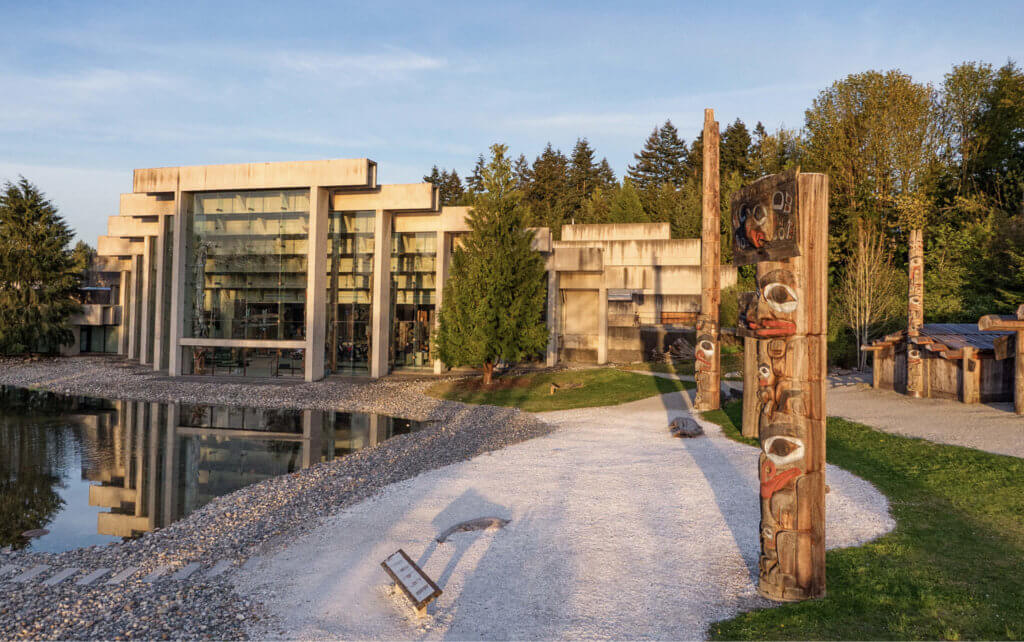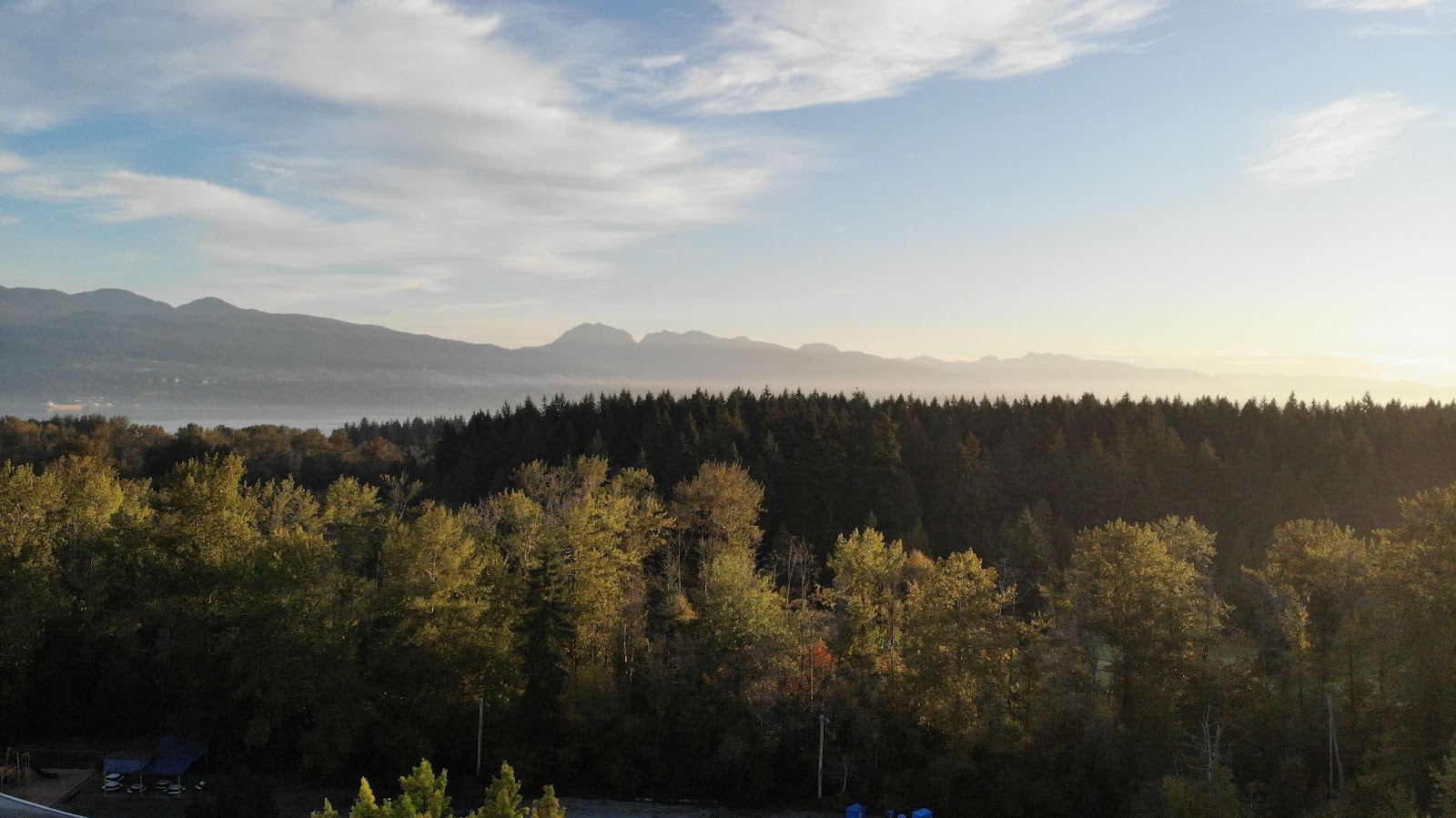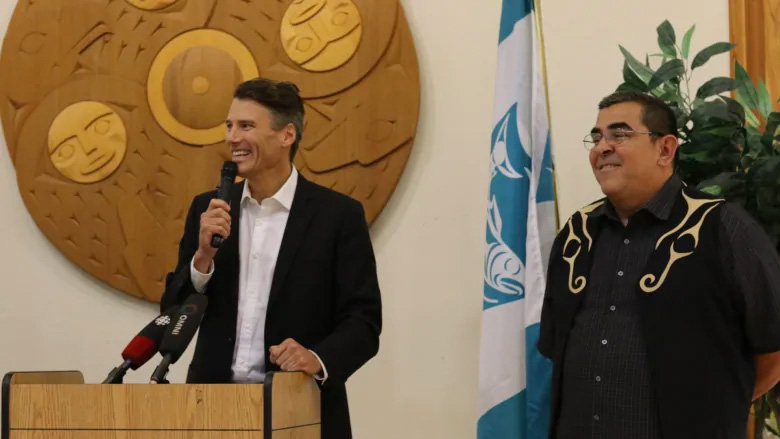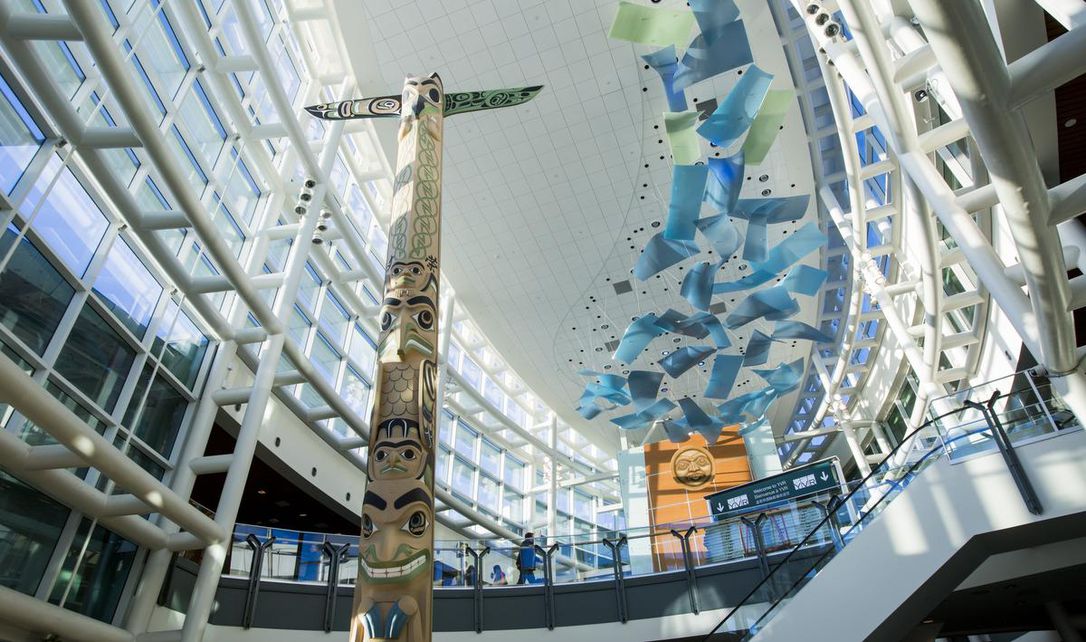National Day for Truth and Reconciliation

We honour the resilience, dignity and strength of generations of survivors and their families, and remember the children who were not able to go home. Take some time to learn about the painful impacts of the residential school system and its inter-generational impacts. We encourage an open heart and open mind to learn ways to walk together towards reconciliation.
#truthandreconciliation #allchildrenareimportant #musqueam #firstnations #NDTR
Say Hello to the Dentist at Lelem Village
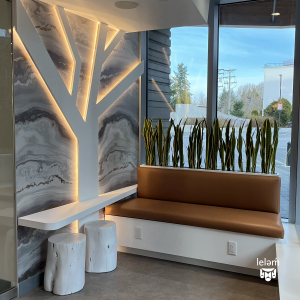

Say hello to @Dentistatlelemvillage, a family dentist right here at lelem Village! Whether you need a routine checkup, a cosmetic upgrade, or anything in between, their friendly team offers a wide range of services from general and restorative dentistry to cosmetic and sedation dentistry. There’s something for everyone.
So if you’re on the lookout for a gentle and personalized dental experience, look no further! They're open to new patients and accept most insurance plans for your convenience.
Schedule your appointment today and discover the difference a happy dental experience can make! ️
Call (604) 238-1668 or check out their website to learn more.
Clean50 Award Announcement

We are pleased to announce that leləm̓ Village Passive Energy Loop district energy is the recipient of Canada's 2024 Clean50 Top Project and tied for the 2024 Top Project of the Year. At leləm̓ Village, Musqueam Capital Corporation partnered with SHARC Energy Systems to utilize sustainable energy from wastewater, geothermal, and rejected energy from grocery store refrigeration. This sustainable energy is shared with all residential and commercial tenants at leləm̓ development.
More details about this award can be found here:
https://bit.ly/MCC-lelem-Clean50Award-PR
https://bit.ly/MCC-lelem-Clean50Award
5 Reasons to Visit the Museum of Anthropology at UBC
Nestled atop the cliffs of Point Grey in Vancouver, British Columbia, lies the Museum of Anthropology at the University of British Columbia (UBC). The MOA is world-renowned for its displays of artifacts and art from a variety of First Nations cultures, as well as its picturesque setting with breathtaking views of mountains, water, and sky.
Since 1949, the MOA has maintained its commitment to promoting cultural diversity. It’s been at the forefront of promoting and bringing awareness to Indigenous art. The museum collaborates with Musqueam artists to display their pieces alongside other Indigenous traditional and contemporary works.
The museum places a premium on artistic diversity and the link between art and community. It also emphasizes the social and political commentaries and contexts through which artists communicate their traditions and concepts.
Curious about the collections and cultural displays? Here are 5 reasons why you should visit the UBC Museum of Anthropology.
A History of the UBC Museum of Anthropology
The MOA UBC began in 1947 as a department within UBC’s Faculty of Arts. Its first director was Harry Hawthorn, and his wife, Audrey Hawthorn, was its first curator. Among their first pieces were Musqueam house posts and the Buttimer collection of First Nations basketry. Then in 1976, it settled in its current home – an award-winning structure designed by Canadian architect Arthur Erickson with a landscape designed by Cornelia Oberlander.
Inside the building, you’ll find the main Museum of Anthropology alongside the Laboratory of Archaeology and its facilities. In 2010, the UBC MOA expanded and added more research infrastructure in labs, storage, research rooms, and the Library and Archives. The MOA saw another major expansion in 2017, with the addition of the Gallery of Northwest Coast Masterworks. It is currently adding more facilities for programming and performances.
UBC Museum of Anthropology Programs
Besides its permanent exhibitions of almost 50,000 works, UBC MOA hosts 3-4 temporary exhibitions a year alongside several public programs and events. These include programs like Night Shift, which is a monthly cabaret series that features local performers. There is also the Native Youth Program, which trains Indigenous high school students from all over British Columbia.
MOA is also one of the largest teaching museums in Canada. The institution hosts courses in museum studies and education, conservation, and Indigenous and world art. Students can apply for practicums and internships at the museum, while professionals can try for curatorial fellowships in partnership with the Mellon Foundation.
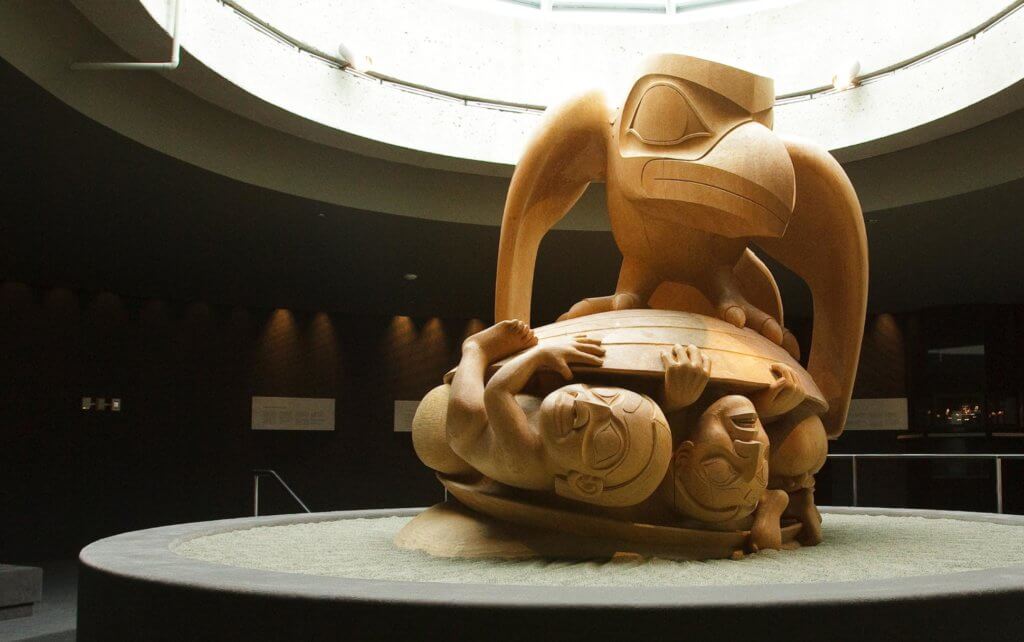
SOURCE: University of British Columbia
5 Reasons to Visit the UBC Museum of Anthropology
Inside the museum, you’ll find tens of thousands of historical and contemporary pieces that will leave you full of awe and wonder. Here are some reasons to visit the museum – not just once, but time and time again.
#1 – The World-Famous MOA Collection of Ethnographic Objects
The Museum UBC hosts almost 50,000 different ethnographic objects from all across the globe. These items include sculptures, totem poles, and other cultural artifacts. 40% of the museum collection is from Asia, with additional significant contributions from Africa and the South Pacific. There are also pieces from other continents.
One of the most famous and iconic pieces in the museum is The Raven and the First Men yellow cedar sculpture by Haida artist Bill Reid. Carved from a single block of yellow cedar, the piece portrays the Haida creation myth.
Besides Reid’s works, the museum also features significant Musqueam artifacts from the late 19th to the early 20th century. It also displays commissioned work from contemporary artists such as Susan Point and Joe Becker.
#2 – Koerner European Ceramics Gallery
In this gallery, visitors can view the Dr Walter C. Koerner collection of over 600 European ceramics. It contains mostly tin-glazed and lead-glazed earthenware and stoneware, used from the 16th to 19th centuries. The Koerner collection, as a whole, is globally unique and iconic.
Alongside the European ceramics, the museum also features commissioned ceramics and textiles by local contemporary artists.
#3 – Botany and National Herbarium
Scientists and nature lovers alike will adore the MOA UBC’s Botany and National Herbarium. Walk amongst stunning flowers and lush greenery, and check out the plant specimens within the facility – there are over half a million, from all around the globe. And it continues to expand as researchers discover new plants.
The herbarium is significant as a research facility for local and international scientists dedicated to studying plant life, but it is also open to the public as an educational resource. Learn more about plant diversity and science as you enjoy the spectacular views.
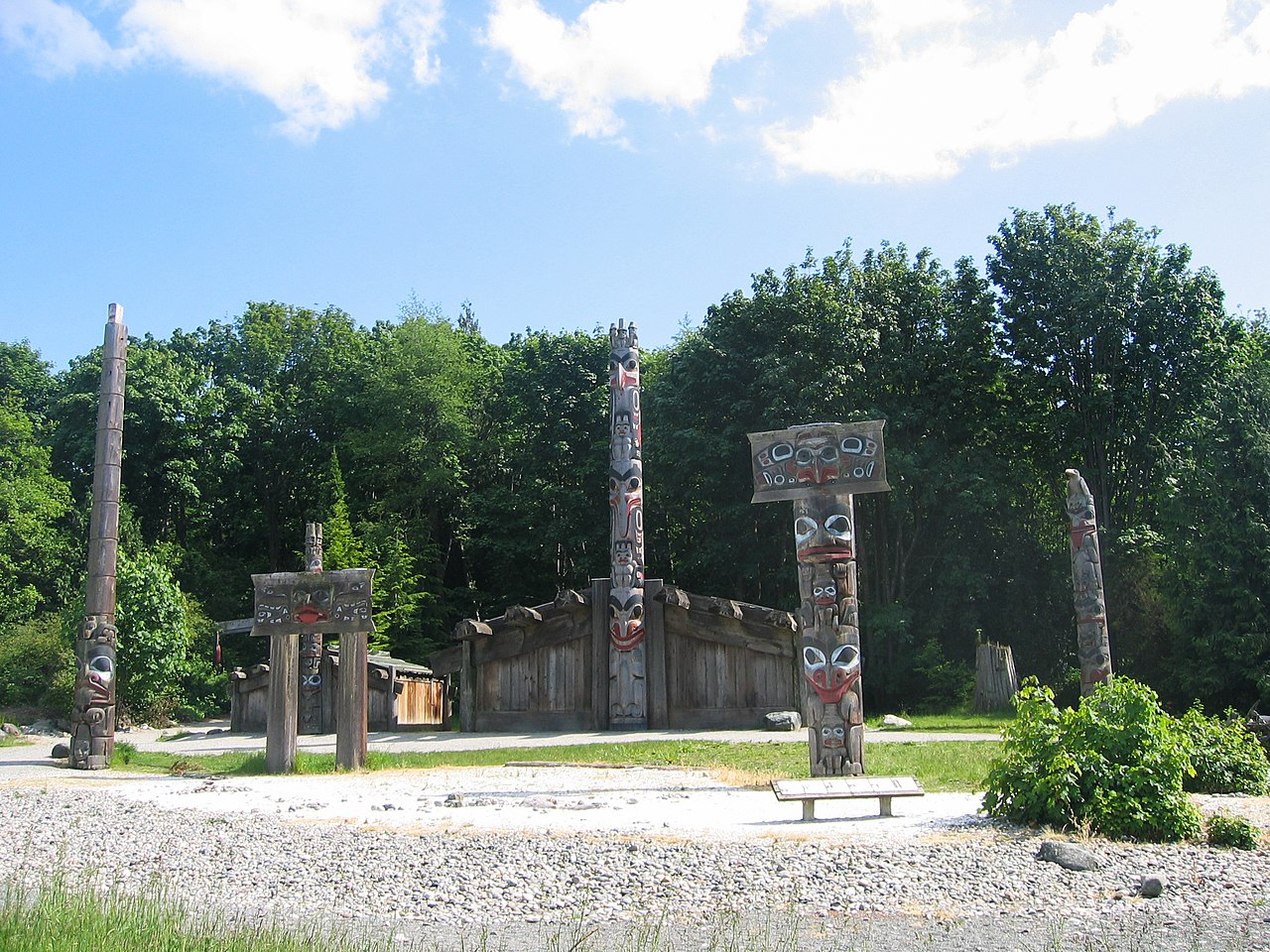
SOURCE: Wikimedia
#4 – The Audrey and Harry Hawthorn Library and Archives
The Library and Archives include a library, historical archives, and the Oral History and Language Lab. This valuable resource has a well-curated collection of published research material focused mainly on museology, archaeology, Northwest material culture, and global ceramics and textiles.
Members of the public can access materials but not borrow them, although many can be reproduced or accessed online. Simply fill in an Application for Use on the website and await approval.
#5 – Sound House
Sound House is the music series at the MOA, and proudly features a fantastic lineup of bands and artists from Vancouver. Their performers cover a wide variety of genres, from spoken word to hip hop. Set in MOA’s Haida House, this program is a “celebration of culture and music” that takes place on the last Thursday of every month.
Now in its fourth season, Sound House brings the heart and soul of music to visitors as they sit amidst Northwest Coast art and architecture. Bring friends and drinks to the outdoor bonfire and enjoy the Sound House's musical delights.
Explore More: leləm̓ village Living at UBC
There’s more to UBC than just the Museum of Anthropology! The campus is surrounded by the beautiful Pacific Spirit Park, which also contains leləm̓ village, a beautiful community of apartment buildings designed with the traditional Musqueam principles of inclusivity and respect. The MOA is sure to take up much of your time, and for good reason – it’s a wonderful display of First Nations culture and creativity. Just make sure to check the museum’s calendar of events before visiting so you know what to catch and when.
5 Awesome Things to Do at the UBC Spirit Regional Park
If you need a break from Vancouver city life or simply want to explore nature, head on to Pacific Spirit Park at UBC. Spirit Regional Park is one of Vancouver’s most popular – and busiest – attractions, with over a million people visiting each year. Discover hundreds of acres of old, thriving rainforest with all sorts of things to do – from hiking to swimming to camping.
While Pacific Spirit Park is open from dawn to dusk, that’s barely enough time to discover everything the park has to offer. We’ve included below some of the best things to do at UBC Spirit Regional Park so you can get the most out of your experience.
About the UBC Spirit Regional Park
Pacific Spirit Park at UBC was established in 1989 to preserve forested areas between UBC and Vancouver. Stretching from Point Grey Peninsula to the Vancouver border, it sits on traditional unceded lands belonging to the xʷməθkʷəy̓əm (Musqueam) First Nation. The whole park covers over 1,800 acres of land surrounding the UBC campus of which 85% is forested and around 200 acres are reserved for the UEL Ecological Reserves.
Spirit Regional Park is a hub of free outdoor recreational activities for all visitors. For those wanting to experience the temperate rainforests of the Pacific Northwest, the park is the perfect location – it’s within a stone’s throw of the city, but when you’re inside, you feel one with nature. Check out the many evergreen trees (including Douglas Firs, Spruce, and Cedars), as well as the diverse local wildlife.
The park is also close to major Vancouver attractions such as the Museum of Anthropology, the UBC Botanical Garden, and Wreck Beach.
Best Activities at UBC Pacific Spirit Park
You’re never short of things to do at this park, so long as you love the outdoors. Check out these 5 awesome things to do at UBC Spirit Regional Park.
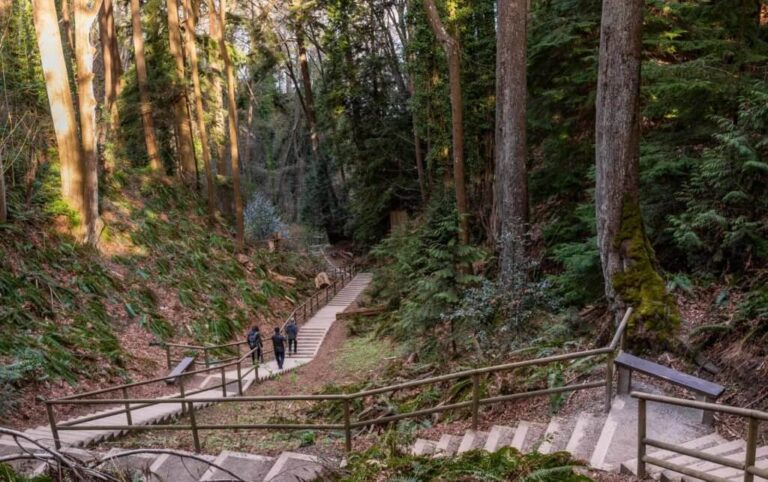
SOURCE: University of British Columbia
#1 – Pacific Spirit Park Trails
The trails are some of the most popular attractions at Spirit Regional Park. Over 70km of trails are available for hiking, horseback riding, and biking.
Off-leash trails
Good news, dog owners! Dogs are allowed at Pacific Spirit Park. There are over 70km of walking and riding trails available to the general public, and 90% of them are leash-optional. Owners will clearly be able to see markers on each trail, designating it as “leash optional,” “leash required,” and “no dogs allowed.”
However, Metro Vancouver requests that dogs be kept out of streams to avoid harming the sensitive wildlife that lives there. Owners should also be mindful of coyotes and owls in the area. While walking, owners will find conveniently-located waste bag stations and red “poop bins,” where they can deposit their dog’s waste.
You can find the leash requirement trail map on the Pacific Spirit Regional Park website.
Running trails
Spirit Regional Park has an extensive trail network that spans over 70km. Many of these trails are rated for beginners, with little elevation or other technical aspects. Plan your route ahead of time and stick to the paths so you don’t accidentally get lost.
It’s also important to remember that some paths are shared, so you may have to look out for bikers, dogs, and horseback riders.
Biking Trails
Park visitors can ride their bikes on most trails in the park – there are 37.1km of trails available to bikers. Plenty of these paths are made of wide gravel, which is suitable for most bikes. Double-check the Pacific Spirit Park Trail Map to see which trails are shared and which are limited to hikers/runners only.
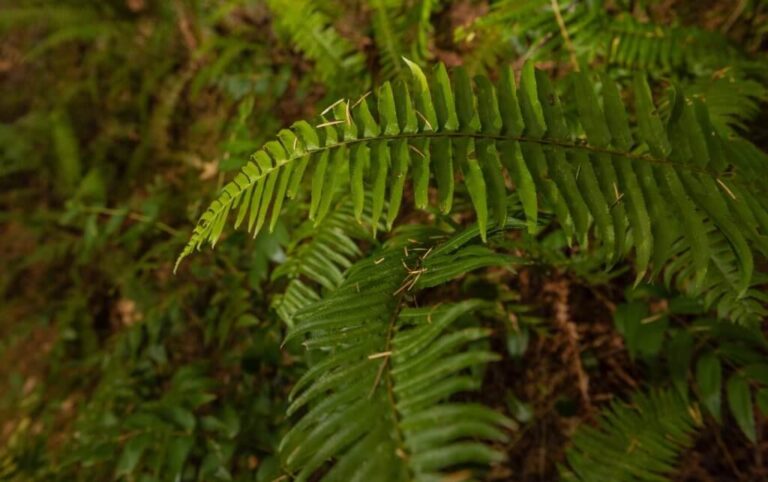
SOURCE: University of British Columbia
#2 – Gardens at Spirit Regional Park
Besides the natural forests, you can also immerse yourself in the different gardens found in the area. Visit rose gardens, Japanese rock gardens, botanical gardens, and lush canopy walks.
The best places to visit are the Nitobe Memorial Garden, the UBC Botanical Garden, and the Greenheart Tree Walk.
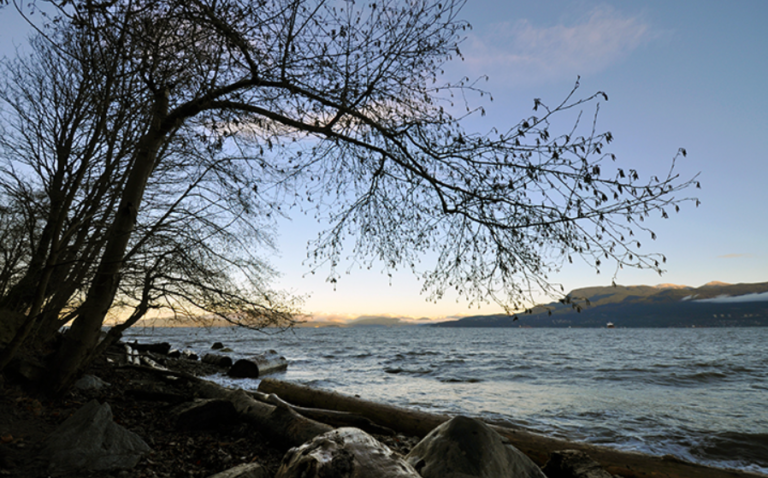
SOURCE: Metro Vancouver
#3 – Pacific Spirit Park Beach
Pacific Spirit Park meets the open water on three different sides, so you have many options if you want some sun and sea. Acadia Beach is the easiest to access (just a short walk from Spanish Banks), making it one of the more popular destinations. Tower Beach is slightly more isolated.
Wreck Beach, another popular spot, is accessible via Trail 6 – although please note that this area is clothing-optional.
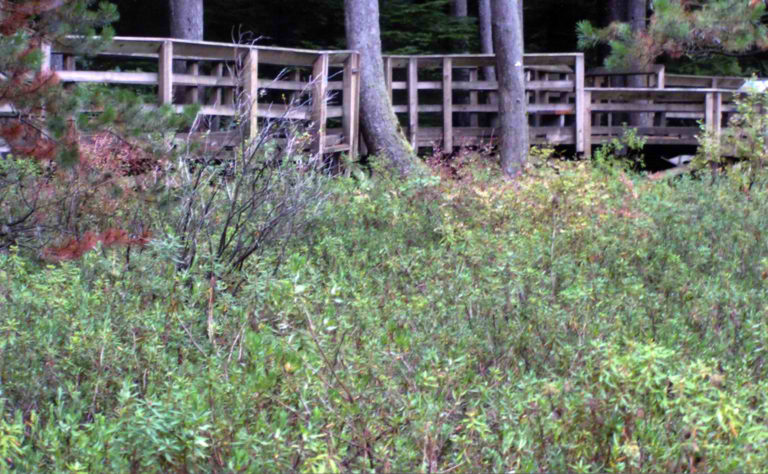
SOURCE: Camosun Bog Restoration Group
#4 – Camosun Bog
xʷməm̓qʷe:m (Camosun Bog) is a fantastic ecosystem located within Spirit Regional Park. Human-made infill and drainage nearly ruined the bog, but the Camosun Bog Restoration Group has worked hard to reverse the damage since 1995.
The bog used to be a source of food, medicine, and raw resources for the Musqueam people. These days, the bog is surrounded by a 300m boardwalk to protect the sensitive sphagnum moss that grows along the banks. Visitors can walk along the path and read the signs that provide information about the bog plants.

SOURCE: Pacific Spirit Park Society
#5 – Family Day at Pacific Spirit Park
Spend a day with your family at Pacific Spirit Park on Family Day! This seasonal event is a great opportunity for a day of fun and games with your loved ones – whether you’re trying something new or coming back to old favourite activities.
Kick things off with sports at the Wesbrook Community Centre. There’s badminton and basketball, with a maximum of six family members per group (including one adult guardian). Then you can channel your inner creative side at the Drop-In Arts and Crafts event held afterwards.
If you’d rather play outdoors, Collings Field and UNA Community Field are open all day for you to play catch, tag, or football, or simply run around and enjoy the fresh air. Moreover, teach your kids about nature on the Family EcoWalk where they can learn about signs of animals or seasonal changes. There’s even a scavenger hunt for nature items.
Of course, don’t forget to clean up at the end of the day – everyone should work together to maintain Pacific Spirit Park.
More Info About Pacific Spirit Park
There is drinking water available at the Park Centre on 16th Ave.
The parking lot along 16th Ave. has two electric vehicle charging stations, where you can power up your cars for free.
For those who want to eat outdoors, there is a picnic area at Acadia Beach. Swimming is permitted but beachgoers should know there are no lifeguards on duty.
Camping is not allowed at Spirit Regional Park.
Exploring leləm̓ village
leləm̓ village is a Masterplanned Community offering apartments at UBC and located in Spirit Regional Park. The village is intended to encourage a relationship with nature and the community, reminding its residents that life is interconnected. Designed using the traditional Musqueam principles of inclusivity and respect, leləm̓ shows you what “home” truly is. Live your life to the fullest in Vancouver’s most open, welcoming community.
Cedar Walk at Lelem to launch new UBC community
Davis is vice-president, real estate, for the Musqueam Capital Corporation, the economic development arm of the Musqueam Indian Band, which is now developing the first phase of its 22-acre Lelem community adjacent to Pacific Spirit Park at UBC.
“The whole idea of what Lelem means — home — is of Musqueam welcoming the rest of the world to this site, to enjoy it and also to experience a bit of Musqueam culture,” he says.
To experience that culture, Avis says, is to appreciate the strong bonds of the Musqueam people.
UBC Raises Musqueam Indian Band Flag Permanently At Vancouver Campus
The flag of the Musqueam Indian Band will be permanently raised on the University of British Columbia’s Vancouver campus.
The flag formally signifies UBC’s recognition of Musqueam people in whose traditional, ancestral and unceded lands the university is located. The provincial and UBC flags will fly alongside the Musqueam flag in the SUB North Plaza.
(CBC) Vancouver Returns City-Owned Land To Musqueam
Land was once used as burial site for the First Nation
Vancouver politicians and Musqueam First Nation leaders attended a ceremony Tuesday to mark the city's return of land once used as a burial site for the First Nation.
The city-owned land in South Vancouver, near the Arthur Laing Bridge, is part of an ancient Indigenous site containing remains of Musqueam ancestors and the so-called Marpole Midden.
How A Job Boom At Vancouver’s Airport Helped Slash The Number Of Musqueam Members On Social Assistance
VANCOUVER—When Mary Point was the facilities manager at Musqueam Indian Band, she ran dozens of events, and got to know a host of job seekers from her community on whom she could rely to work on a casual basis.
Now, just over six months into a first-of-its kind post with YVR airport authority, Point is connecting those same job seekers with permanent opportunities, with a level of insight into their strengths and interests most recruiters could only dream of.
A Place Of Learning: A Musqueam View Of UBC And BC History
Elder Larry Grant describes the vibrant forest and rich Musqueam community life that preceded BC’s largest university.

